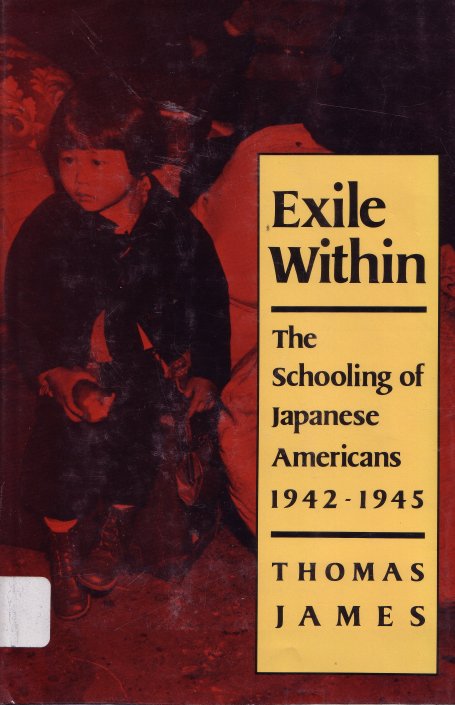
Exile Within: The Schooling of Japanese Americans, 1942-1945

Thomas James, 1987
The book starts off talking about the young people who were uprooted from the schools they were attending and ended up attending schools in the internment camps. It then goes into the history of Japanese immigration in to the U.S. and the education of the children at that time. Also discussed is the anti-Japanese movement in California. Showing the importance of education schools were started as soon as possible in the assembly camps and later at the internment camps.
The book goes into a lot of details relating to the individuals centers and camps and their schooling programs. The involvement of the WRA is discussed along with the role of the military in the camps. The author also notes that there was a severe teacher shortage even before the war, and the war only made it worse. (Which means some of the criticism of the teaching in the camps could be explained by a lack of certified, experienced teachers for the camps and other schools, too.)
The teachers in the camps were also sometimes looked down on by teachers outside the camps, not counting the sometimes degrading conditions in the camps themselves which both helped to contribute to a high turnover rate which also, in general, ends to lower overall teacher quality.
Another point the book makes is that the teachers were basically cut off from the Japanese-American community and were also cut off from the administration of the camps since the administration made all the decisions; thus, the teachers had to operate sort of separately from everyone else.
There were also some arguments about the way things should be taught; in a traditional method or in a progressive method. The teachers tended to favor the traditional method of teaching. The administration, though, also wanted them to basically indoctrinate the students, serving as mouthpieces for the administration itself.
This was all made worse for the Japanese-American teachers, of course, since their status was below that of the white teachers.
The author notes that the elementary and junior high school groups had the least troubles and the fewest students by proportion; the high schools had proportionally the most students and the most problems. The author also points out that the students themselves had to deal with many, many problems that their internment caused, just one of those being having to adapt to frequently changing administration rules and edicts.
The overall result was that fewer of the students desired to go to college and their scholastic achievement of the students suffered.
The next chapter deals with the loyalty questionnaire. This was especially bad at Tule Lake and the teacher turnover rate skyrocketed. It got so bad that compulsory schooling was dropped entirely. The use of social scientists doing camp studies is also discussed, especially in that it seems that camps that had such studies had fewer problems than those that had no studies carried on.
Various problems with the resettlement program are discussed along with how the Nisei felt who went to colleges outside of the camps. It also deals with the racial prejudice that they encountered outside of the camps.
The book then goes again in to the various problems at Tule Luke, these including the existence of private schools, pressures to be loyal Japanese, reactions of students, etc.
This is a very specialized book in that it deals with one aspect of the entire internment issue, but it doing that it manages to go into some of the problems that were going on in relation to lack of cultural understanding on the part of the camp authorities, along with the affect of Japanese culture on the schooling of the children. An interesting book.
Main Index
Japan main page
Japanese-American Internment Camps index page
Japan and World War II index page
|